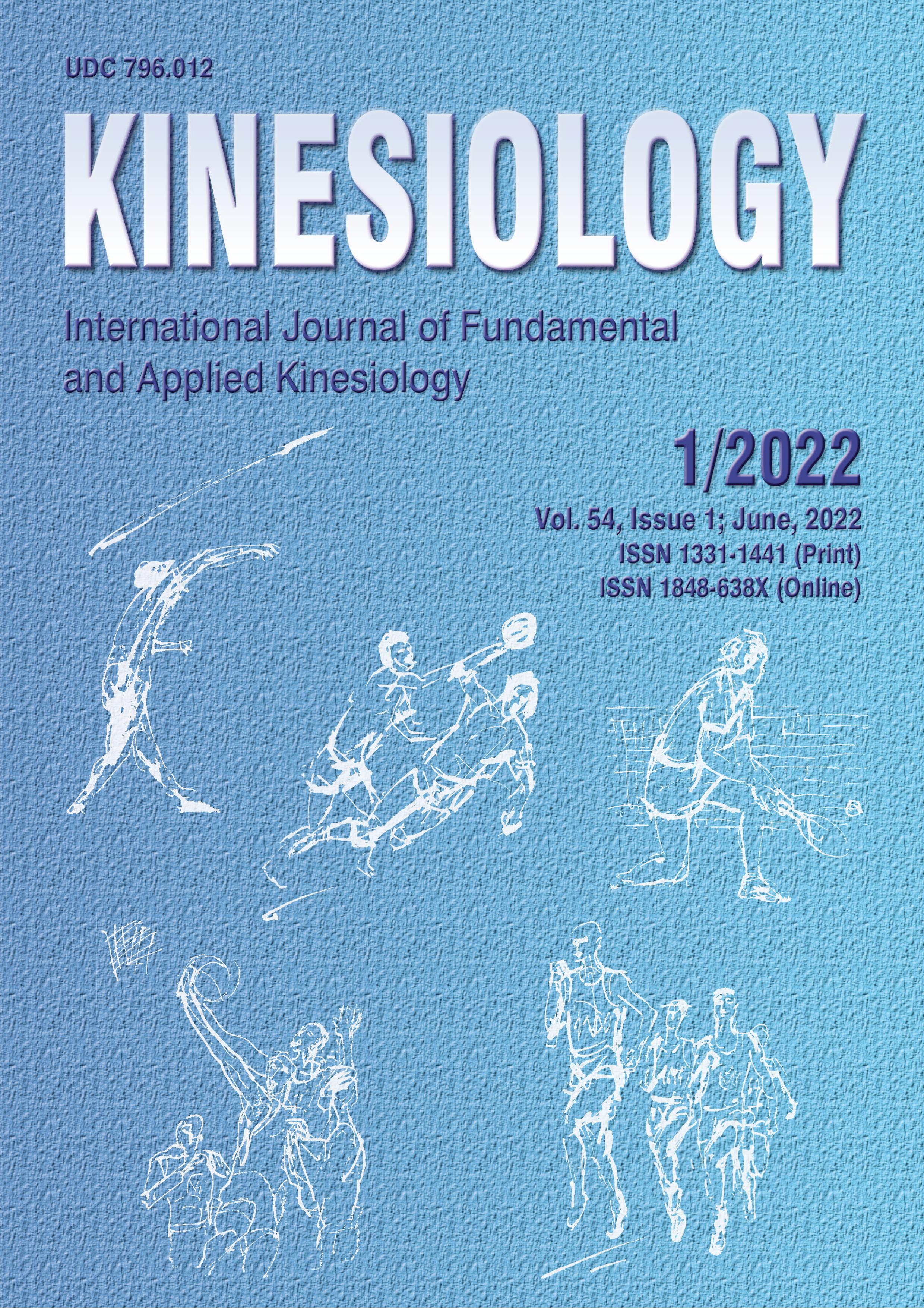INFLUENCE OF INDIVIDUALIZED TRAINING BASED ON MECHANICAL FORCE-VELOCITY PROFILE ON THE BILATERAL VERTICAL JUMP PERFORMANCE
Abstract
A detailed review of literature revealed that there is no study of the influence of different types of loads on the performance of a bilateral vertical jump examined on subjects of the same type of F-v profile. Therefore, the aim of this study was to evaluate the influence of two different load-types on the squat-jump performance in force-deficient subjects. During the seven-week training program, the 15 participants of force group performed a half back squat with a load of 80-85% 1RM, while the 15 participants of velocity group performed squat jumps with an unloading of 25% of body weight during the same period of time. The force group significantly improved height of the squat jump (+12.43 ± 6.98%; p <0.001), with a large effect (ES = 1.92 ± 0.72), while in the velocity group were recorded non-significant change (+2.02 ± 5.92%; p = 0.26), with a small effect (ES = 0.30 ± 0.60). These results in the force group were accompanied by a significant optimization of the F-v profile (+31.53 ± 34.91%; p = 0.003), with the attribute of large effect (ES = 1.10 ± 0.65), and the velocity group again recorded non-significant change (-2.20 ± 34.34%; p = 0.70), with a trivial effect (ES = -0.13 ± 0.60). The results of the force group support the hypothesis of the effectiveness of a training program aimed at developing a deficient component of the F-v profile.
Keywords: jump testing, targeted training, F-v deficit, squat jump
Downloads
Published
How to Cite
Issue
Section
License

This work is licensed under a Creative Commons Attribution-NonCommercial 4.0 International License.
At Faculty of Kinesiology we recognize that access to quality research is vital to the scientific community and beyond. Kinesiology is non-profit journal and all costs of publishing and peer review process are covered by the publisher itself or other funding sources like Ministry of Science and Education of the Republic of Croatia. Full text papers are also available free of charge at http://hrcak.srce.hr/kineziologija. There are no restrictions on self archiving of any form of paper (preprint, postprint and publisher's version).
Articles are distributed under the terms of the CC BY - NC 4.0
Kinesiology does not charge any fees to authors to submit or publish articles in our journal.


